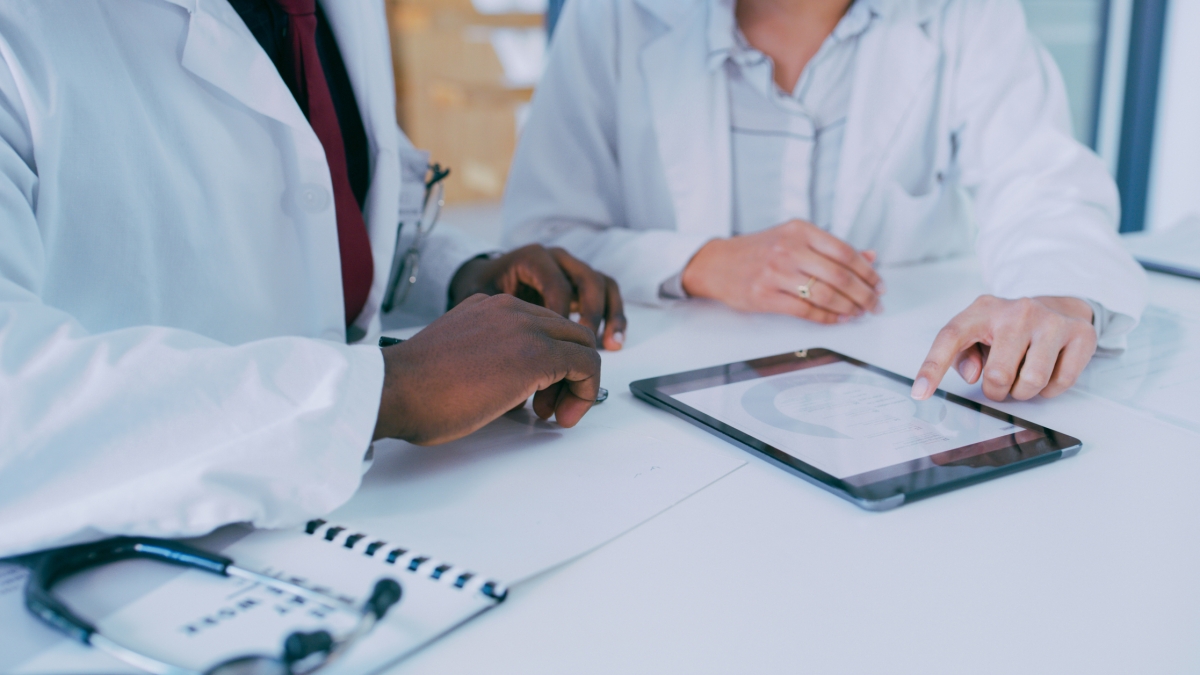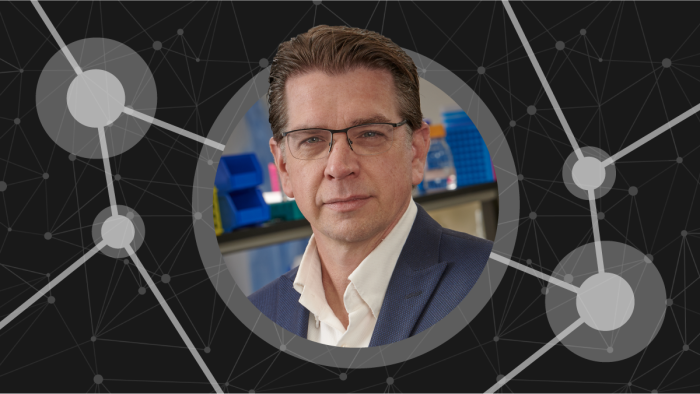New Executive Director David Engelthaler wants to build health planetariums across university

This is how David Engelthaler described his first couple of months on the job as executive director of the Health Observatory at Arizona State University:
“It’s been a little bit of drinking from the fire hose,” he said.
Engelthaler expected nothing less when he decided to lead the observatory, a new research initiative at ASU Health that will help prepare the state to identify, track and mitigate future crises.
What he’s also discovered is a commitment from university leaders to help him in any way possible.
“It’s been pretty amazing, learning the ASU landscape and connecting with different schools and researchers and leaders that all have a real strong interest in the overall ASU Health mission,” he said. “I’m looking forward to continuing that (collaboration).”
ASU News talked to Engelthaler, who has 30 years of public health experience, about his new roleand plans for the observatory.
Note: The interview has been edited for clarity and brevity.

Question: Let’s start here: What drove you to take this job?
Answer: Great question. I have had a life career mission of improving the health of Arizonans for over 30 years. I was in public health for about 15 of those years … and then I joined TGEN (the Translational Genomics Research Institute). I was there for 18 years, and we really made public health an important translational component of what we were working on, bringing next-generation science and genomics to support public health departments, hospitals and others for identifying and tracking outbreaks and understanding how pathogens evolve.
When the idea of the Health Observatory was brought to my attention, it just seemed like such an obvious thing … the innovative capabilities and power of ASU together with a mission towards improving health. In this case, transforming health-related data into health knowledge for Arizonans at all levels, from public health officials to decision-makers and elected officials. So, with that kind of exciting mission, I just had to seize the opportunity.
Q: Is there something unique about the observatory’s mission that intrigued you?
A: I’d say the uniqueness is bringing the innovative culture at ASU and the advancements in data science, analytics, AI together to really turn this into health knowledge that otherwise wouldn’t be available. To me, that’s kind of this exciting advancement that ASU has taken the lead on, and I’m glad to be part of it.
Q: Can you provide a specific example of what the observatory will be doing?
A: Some of the great observatories are not just there for generating science. They want to get that science knowledge out to the general public, so they have planetariums where you can really go and experience the understanding of the universe. What I really want us to do is build a health planetarium as part of the observatory, a way for people to experience health knowledge in new ways, using a lot of the advancements at ASU.
How we understand and absorb knowledge is very different than how we did … 10 years ago. You have this capability of advanced tools in the virtual reality space, the augmented reality space, really novel ways of getting people to absorb data. That’s an exciting direction we will be going in.
Q: So, if someone walked into an observatory planetarium, what might they see or be able to do?
A: The planetarium may be more of a virtual or multi-site planetarium using the capabilities already in place at different locations at ASU, like the Media and Immersive Experience Center in Mesa or the Digital Global Forum at the Thunderbird School of Global Management. I want to make sure we’re using that technology to explore and understand health information, but in a way that becomes sticky because psychologically you’re receiving it in a different way. So, it becomes very effective.
Q: What type of health data could be available at these sites?
A: We all know that extreme heat is a problem in Phoenix and other parts of Arizona for different populations for different reasons. What we’re trying to do is bring in different data layers that we can better understand and maybe even forecast where the primary problems are going to be, at least on the health side.
We know, for example, that we have populations where there are problems with opioid use. When people are using opioids and/or meth or other drugs as well, they don’t recognize that they are being negatively impacted by the heat as much and therefore get much more heat exposure and have a much higher risk of dying. We can start to combine these types of data layers and work with state and local health officials to really target mitigation and intervention efforts.
Also, one of the areas we’re working on now is an infectious disease space. Valley Fever is Arizona’s disease. We can bring resources to bear to better understand the fungus as it exists in the environment, and work with partners in tracking the fungus in the soil and air, understanding what the drivers are of people getting exposed, the high-risk areas and maybe the high-risk times. These data layers haven’t existed before. Bringing them together, we can work with local health to maybe provide some targeted interventions of even prevention of this really important disease in our backyard.
Q: Is there anything else about the observatory you’d like people to know.
A: I think we all learned during the pandemic … when there’s really a health crisis, people are desperate for accurate and useful health information. That wasn’t always available during the pandemic. People were trying to understand what the health department was saying or what the CDC (Centers for Disease Control and Prevention) was saying. Some things didn’t make sense, or they contradicted each other. What we want is really to build this as a health asset for Arizona, for trusted knowledge around health and in all aspects of health. So, this is not just a research enterprise at ASU. It’s essentially a new institution that’s here for the public good for understanding health and absorbing health knowledge.
By Scott Bordow | October 10, 2024
Original article published on ASU News

